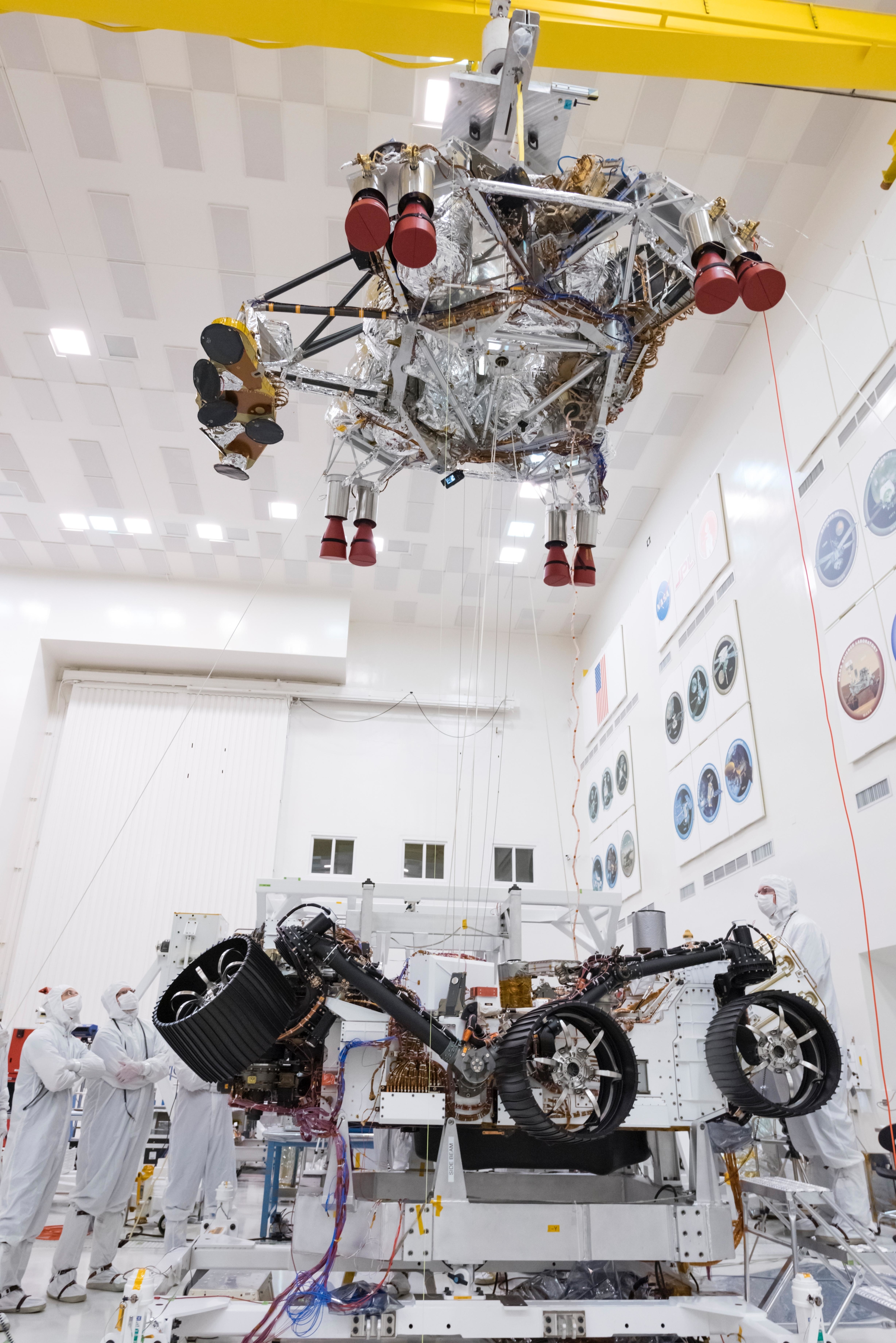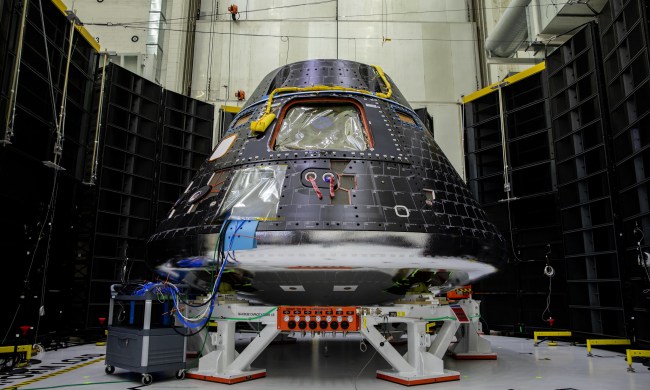
When the Mars 2020 spacecraft enters the Martian atmosphere in two years’ time and prepares to land, the rover will need to detach from the rocket-powered descent stage so it is free to explore the Jezero Crater. This delicate operation was recently practiced here on Earth, with engineers at NASA performing a successful separation test using a large crane to ensure the rover and descent stage can separate cleanly.
“Firing the pyrotechnic devices that held the rover and descent stage together and then doing the post-test inspection of the two vehicles was an all-day affair,” Ryan van Schilifgaarde, a support engineer for Mars 2020 assembly at NASA’s Jet Propulsion Laboratory, said in a statement. “With this test behind us, the rover and descent stage go their separate ways for a while. Next time they are attached will be at the Cape next spring during final assembly.”
Now in its final year of engineering before launching in July 2020, the rover will be put through a range of tests to ensure it is ready for whatever its long space journey and the red planet can throw at it. In addition to the separation test, it has already completed tests of its high definition cameras which will capture images of the surface of Mars and a series of tests of its launch, navigation, and landing systems.
The next benchmarks for the rover will be evaluations of how its computers and mechanical systems fair in the cold temperatures and low atmospheric pressures it will experience on Mars. The Surface Thermal Test will recreate the conditions on Mars to see if they cause any electrical or other issues.
Once all the testing is completed and the engineers have declared the rover ready for its expedition, it will be launched on 17 July 2020 from Cape Canaveral, carried aboard a United Launch Alliance Atlas 5 rocket. It will take seven months for the craft to reach Mars, with a landing scheduled for February 18, 2021.



